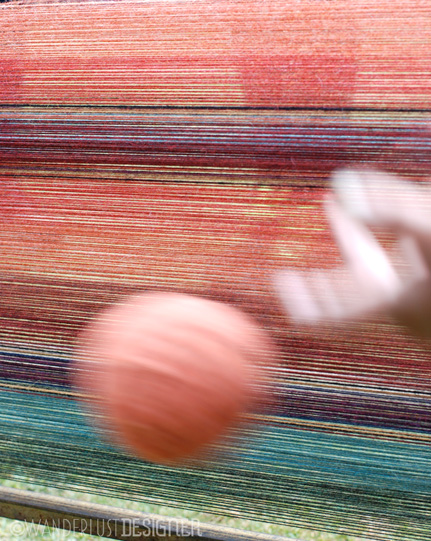Pattern+Place: The Art of Andean Weaving, Peru

While traveling in the Sacred Valley of Peru, we were lucky to meet a group of local traditional weavers and have a demonstration of their talents. The demonstration was put on by an organization called The Center for Traditional Textiles. Their mission is to not only promote this traditional Incan art form to tourists and stimulate economy to local artists, but also to educate the local community to continue their weaving traditions and pass it on for generations to come.

Their weaving is a beautiful art form — not to be missed. They demonstrated the process, from spinning the wool to thread and making their colorful looms, to actual weaving and final product. Here are a series of pictures from my experience.

The first step was to spin the various wool samples into yarn. This mesmerizing task involves the process of slowly feeding clumps of wool to a spinning top-like wood piece. Then, with their hands, they slowly stretching the newly formed yarn to the desired thickness.

Typical Peruvian weavings use llama, alpaca and vicuna wool. The vicuna wool is the softest and most luxurious. In Incan times, this was used for kings and powerful people.

After spinning the yarn, it is dyed by various natural ingredients to produce a gorgeous earth tone palette.

The next part of the process is to use this colorful yarn to make a loom. Depending on the size of the final piece, 2 weavers sit on the ground with a wood loom frame. Then they proceed to throw different colors of yarn back and forth, each time looping the yarn around the frame to create the loom.

If this palette above doesn’t make you melt, I don’t know what will! Absolutely stunning combination of colors, each with very intentional placement. The weaver must envision the final pattern in her head to know which colors to use and how many strands to place in the loom to get the desired pattern.

Once the loom is complete, the weaving begins. This is a process of feeding different colored yarn through each strand in the loom. Depending on which strand the woman weaves under or over will determine the pattern. The intricacies of designs created as well as the sheer tightness of the weaving is a true art form.

The artists encouraged us to give the weaving a try. Above is a picture of my daughter with one of the patient weavers.

Here she is above, using a bone tool to lift the strands to weave under. Quite an amazing lesson in patience and artistry.

So, if you happen to head to Cusco, Peru or the surrounding Sacred Valley, I would highly recommend a visit to the Center for Traditional Textiles store and museum. And, if at all possible a demonstration. Definitely an unforgetable and educational experience for all ages.




